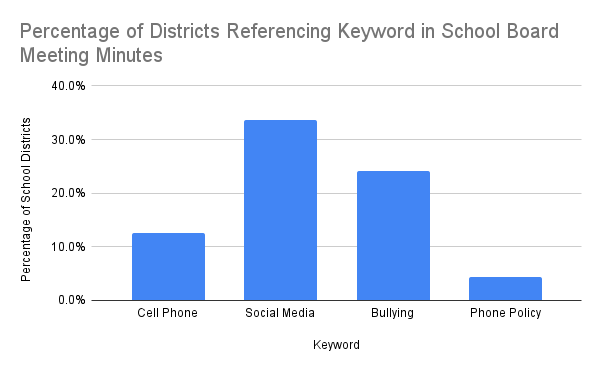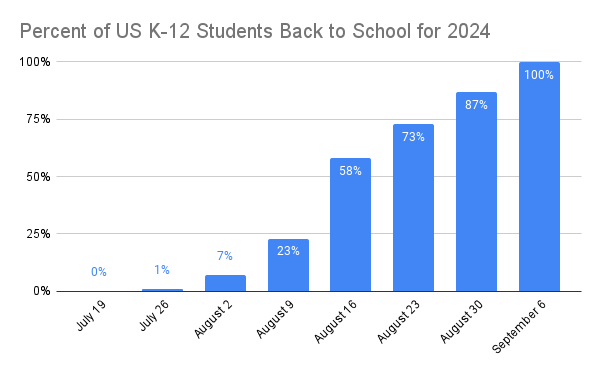1. Burbio's State-Level Funding Tracker features constantly updated, state-specific grants for K-12 schools, covering all state departments, as well as Federal grants where states can tailor the criteria. Burbio has identified over 1,000 grants covering over $30 billion in spending. A critical element is the importance of evaluating state priorities as they often signal state grant opportunities. This week we start with a New Jersey profile that maps priorities outlined in their state education budgets to grants we have seen the state issue.
New Jersey's FY 2025 Budget in Brief and FY 2024 Budget Recommendations highlight four major spending initiatives going into FY 2024/25:
- Pre-K: For FY 25, "the Governor’s budget includes $124 million in new funding, which fully funds programs that started in FY2024, and includes an additional $20 million that can be used to expand programs into new districts or support other needs like workforce development. . . ."
- Artificial Intelligence: From the 2025 BIB: "To help prepare our students for the economy of the future, the budget includes a new grant program to help schools explore generative artificial intelligence and another program to support school districts . . . (in creating) new AI-focused career and technical education courses."
- Tutoring: Again from 2025: "The Department . . . will continue to focus on learning acceleration and literacy . . . (announcing) a $52 million dollar grant program for high-impact tutoring, a highly effective and evidence-based intervention . . . "
- Climate Change: From 2024: "The budget (renews) the Climate Change Education Grants program, which was championed by First Lady Tammy Murphy and helps schools meet New Jersey’s first-in-the-nation climate-change standards."
These initiatives all manifest in grants that apply to 2024/2025:
- Pre-K: On July 3rd, New Jersey announced the availability of $20 Million for Pre-K expansion, working in partnership with local child care and head start providers. Districts have until August 14th to apply.
- Artificial Intelligence: This June 3rd announcement of $1.79 million in computer science grants declares, "Of particular note, 17 of the 27 school districts and charter schools receiving the (grant) have specifically tailored their programs to cybersecurity and/or Artificial Intelligence (AI) . . . . "
- Tutoring: Tutoring grants came in two pieces, with the first announced last July and running through August 2024, and a second announced in January running through December 2024.
- Climate Change: This climate change education grant was due in February of last year and awarded to 34 districts across the state to be used through May 31st, 2025.
2. Burbio's School Board Meeting Tracker covers school board meetings for over 2,000 school districts each month, representing over 55% of the K-12 school population. This week we look at social media and related topics and measure the percent of districts that have discussed the subject since January. Note:
- Social Media covers the terms "social media" plus various platforms such as Facebook, Instagram, TikTok, Snap, and Snapchat.
- Cell Phone covers the term "cell phones", as well as phone policy or phone ban related terms. "Phone Policy" covers only phone policy or phone ban related terms.
- Bullying covers the terms bullying and cyber-bullying.

3. California districts have a unique, highly detailed reporting requirement called "Local Control and Accountability Plans" (LCAPs). LCAPs are three-year plans updated annually, that outline district strategies. The 2024-25 documents are just being posted state-wide. Burbio gathers these plans and extracts signals from them which we highlight in our District profile, based on client specific keywords. The level of detail in LCAPs is considerable; to examine just two areas in a cross section of districts locales:
Tutoring:
- Fresno Unified, a "large city" district, provides "comprehensive" after school tutoring in literacy and mathematics, with a particular focus on English learners and newcomer students, plus on-demand tutoring. After school tutoring spending is over $70 million, on-demand tutoring is embedded in a professional development budget of over $40 million, and tutoring is also among the tools referenced in school site-based budgets totalling millions of dollars.
- Pleasanton Unified, a "small city" district, has two targeted tutoring programs, $70,000 for the African American Family Network STEP program, and just over $100,000 for both professional development and tutoring using the AVID model.
- Tracy Unified, a "small suburban" district, has set aside $500,000 which includes tutoring program targeting disadvantaged, foster, English learners, and homeless youth. The program was only partially implemented this past year due to staffing challenges.
Chronic Absenteeism:
- Riverside Unified, a "Large City" district, has set aside over $9 million for Attendance Case Management, $175,000 for home visits, plus several multi-million dollar line-items related to behavioral supports.
- Newman Crows Landing Unified, a "Town-Distant" district, where Chronic absenteeism dropped from 34% in 2022 to 14.7% in 2023 - after being 4.7% pre-Covid - has set aside $620,000 to develop a plan to address chronic absenteeism involving "parent education, incentives, supports for students, and clear procedures."
- Valley Center Pauma, a "Rural-Fringe" district, has set aside $870,000 for full-time counselors to provide "immediate and targeted support for students on the socio-emotional and mental health areas. . . . students will receive the services they need to re-engage in school, thus reducing student absenteeism." There are also funds set aside for attendance monitoring and outside mental health supports.
4. School start dates vary widely across the country, with school starting in late July in some districts and not until after Labor Day in others. Burbio provides school calendar data to partners that use the information to better manage forecasting and demand and to time marketing campaigns by location. Below is a chart that shows the percent of K-12 students starting by week across the U.S. Note that over half students will be in the classroom by August 16th: 